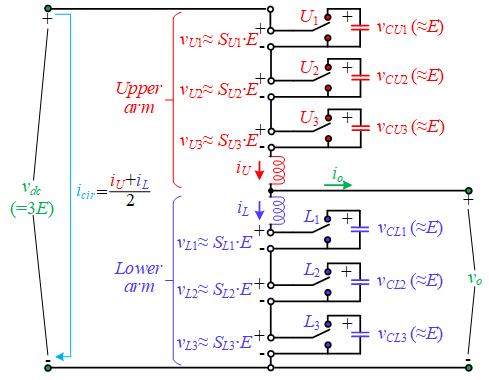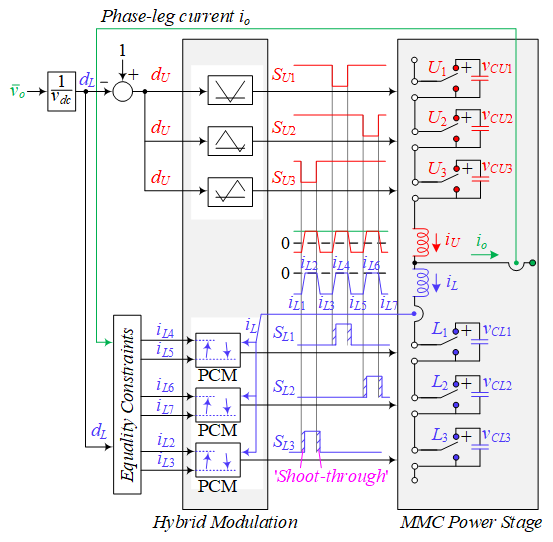LIBRARY
Improved Switching Cycle Cell-Capacitor Balancing Control of Modular Multilevel Converters

To counter this power density challenge, switching-cycle-balancing control (SCC) was proposed by CPES a decade ago. SCC uses a combination of average carrier-based and peak cur-rent mode (PCM) control and has the potential to balance cell capacitor voltages in the timescale of a switching period by alternating circulating current multiple times in a switching cycle. This decouples the MMC operation from the line-frequency operation. This conversion from line-frequency to switching-frequency operation decreases the required cell capacitance by over ten times, paving the way for much more power-dense MMCs. The decoupling from the linecycle also enables DC-DC operation for the MMC, a feat previously impossible, and opens new avenues for MMC application.
Despite its many advantages, the capacitor voltage-balancing effectiveness in SCC is susceptible to non-ideal factors such as parameter and measurement errors. Therefore, a closed-loop balancing scheme is critical for fully achieving effective switching-cycle balancing. However, due to the very high-frequency circulating current alternations, subsequent extremely fast regulation, and heavily coupled control parameters, the closed-loop balancing control presents a huge challenge. This research addresses these challenges and develops an effective closed-loop voltage-balancing scheme. The mathematical foundations of the proposed control are laid, and the proposed scheme is verified using a custom-built 10kV silicon-carbide MOSFET) -based MMC under 24kV DC-link voltage.























































































